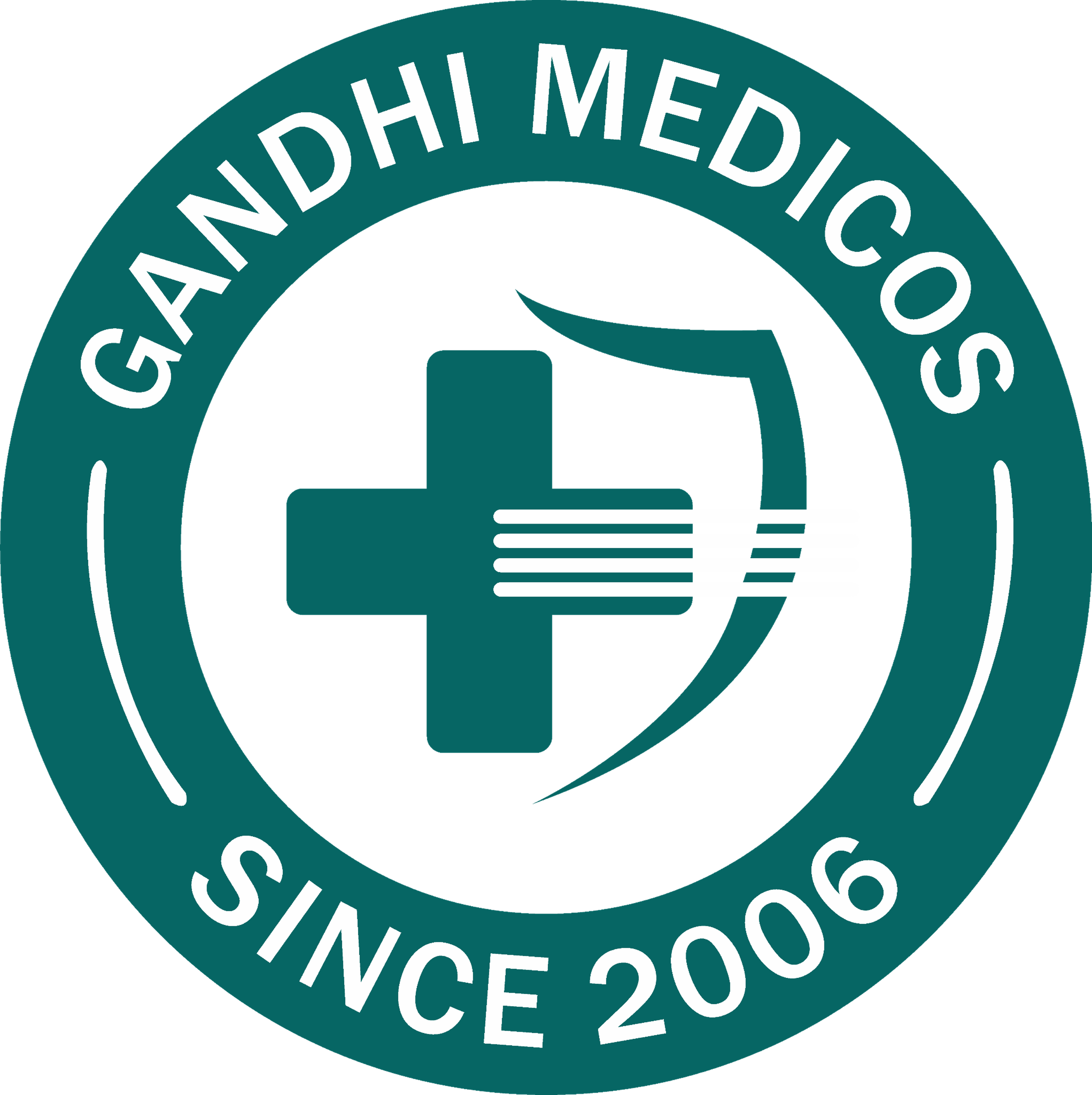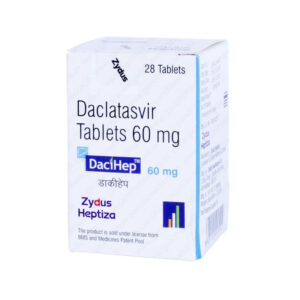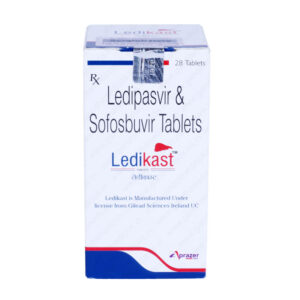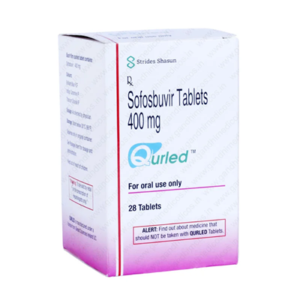Description
Qurdac 60 mg (Daclatasvir) is a direct-acting antiviral (DAA) inhibitor drug specified for patients with chronic Hepatitis C viral (HCV) infection. Among 9 different genotypes of HCV, Qurdac 60 mg (Daclatasvir) is used in patients with genotype 1 or 3.
Daclatasvir is popularly known as HCV polymerase inhibitor as it inhibits the important protein used for multiplication (RNA replication and virion assembly) of viral cells i.e NS5A protein RNA polymerase.
For attaining a sustained virologic response (SAR), daclatasvir is recommended in combination with other anti-HCV drugs. Combining them assists in difficult to treat patients like advanced scarring of the liver (cirrhosis), HIV-1 co-infection, and recurring HCV infection after the liver transplant operation.
Additional advantages:
- Improves the quality of life of patients
- Decreases chances of procuring liver cancer
- Assists in other liver problems
Administration of Qurdac 60 mg (Daclatasvir):
Qurdac 60 mg (Daclatasvir) is given orally in a form of 60 mg dose once-daily dose along with sofosbuvir or ribavirin for 12 weeks. It can be taken with or without food. Once swallowed, daclatasvir get readily-absorbed (bio-available) in 2 hours and binds with HCV cells with a high affinity (99%). Furthermore, it gets metabolized in the liver via different types of proteins. After finishing its activities, approximately 50% of drug gets excreted from the body in between 12 to 15 hours.
Interactions of daclatasvir with other drugs could cost the efficacy, unnecessary modifications in dosage, and a higher rate of side-effects. Based on its interactions, the dose may be reduced to 30 mg or increased to 90 mg based on the requirements.
Note: The duration and frequency of dosage can be changed based on the genotype of HCV, drug interactions, and initial experience of the patients. It is mostly dependent on the doctor’s judgement.
When should Qurdac 60 mg (Daclatasvir) be avoided or used cautiously?
- If patients had Hepatitis B viral infection in prior testing
- If patients are found with resistant-type (mutated virus) HCV in prior testing
- If patients are taking any sort of non-prescribed or prescribed drugs, herbal medicines, or dietary supplements
- If patients were taking other drugs before or during the daclatasvir administration
- If patients had a liver transplant before the initiation of dosage
- If patients are suffering from heart problems
- If patients have complications in the liver other than HCV infection
- Avoid having intercourse (sex) without condoms, HCV may spread to your partner if you are under treatment
- If patients are pregnant and planning to breastfeed
Side-effects of Qurdac 60 mg (Daclatasvir):
Serious side-effects:
- Slow heart rate (bradycardia)
- Hepatitis B viral re-activation
Side-effects in combination with sofosbuvir:
- Tiredness (Fatigue)
- Headache
Side-effects in combination with sofosbuvir and ribavirin:
- Low count of red blood cells (RBCs) (Anemia)
- Tiredness (Fatigue)
- Headache
- Nausea
Uncommon side-effects:
- Difficulty in sleeping (Insomnia)
- Vomiting
- Diarrhea
- Severe rashes on the skin
- Chest pain
- Fever
- Confusion
- Shortness of breath (dyspnea)
- Weakness
- Dizziness
Note: These are not all possible side-effects of Qurdac 60 mg (Daclatasvir), please ask your doctor for more information regarding the same.




 :
:  +91 – 9999064250 | 9811604444 | 9811604424
+91 – 9999064250 | 9811604444 | 9811604424








Reviews
There are no reviews yet.